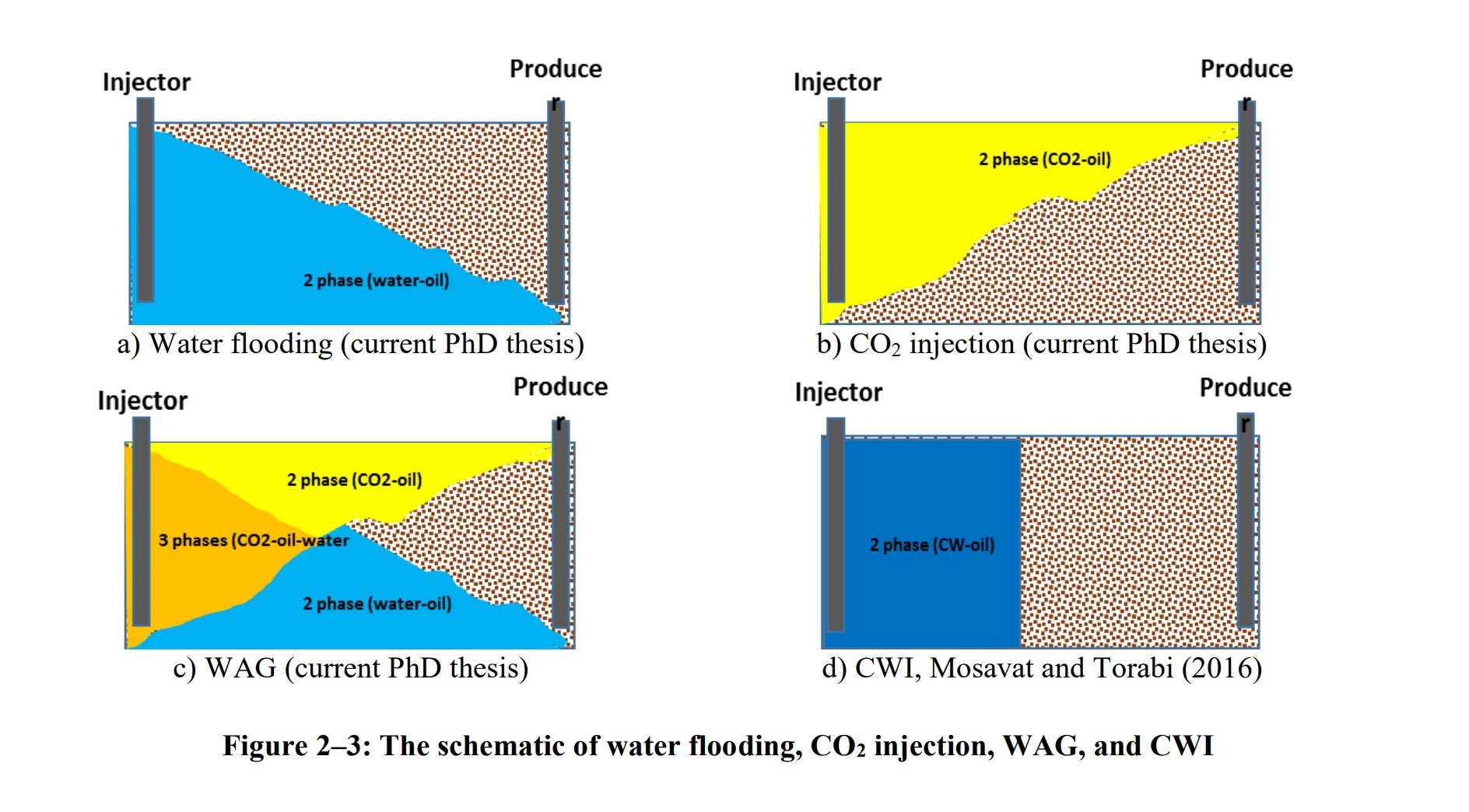Investigation of carbonated water injection (CWI) for enhanced oil recovery at the pore and corescale
CMG软件的应用情况
-
流体模型构建:使用CMG WinPropTM软件创建CO2-油和CO2-盐水混合物的组成和性质。
-
模拟实验设计:将流体模型整合到CMG-GEMTM组成的和非传统储层模拟器中,以重现本研究中进行的CWI和CO2-WAG驱替测试。
-
结果预测与分析:通过模拟实验结果,预测CWI在高压和高温条件下的表现,并与实验结果进行对比分析,验证模型的准确性。
作者单位
Abstract
Oil recovery by CO₂ injection has been studied in the laboratory and applied in the field, however, for the most part, CO₂ injection lacks acceptable sweep efficiency. Various CO₂ injection strategies such as CO₂ alternating water and gas (CO₂-WAG) and CO₂ simultaneous alternating water and gas (CO₂-SWAG) have been suggested to alleviate this problem and improve oil recovery. The amount of CO₂ required can be a limiting factor especially in offshore applications. Thus, carbonated water injection (CWI) has recently been given considerable attention as it requires less CO₂ for the injection and increases the sweep efficiency. This study provides an overview of previous work on the topic and outlines the results of an integrated experimental, theoretical, and simulation investigation of the CWI for enhanced oil recovery (EOR). The effect of carbonated water injection on vertical displacement (gravity effect) at both the pore-scale and core-scale was investigated in this study. The novelty of this research is to investigate the performance of water flooding (WF) and CWI in the presence of gravity using homogeneous and heterogeneous (fractured) porous media. The first phase of this research investigates the pore-scale displacement phenomena which occurs in the presence of CWI in a glass micromodel. Although the effects of many parameters have been studied, an investigation of the effect of gravity displacement and heterogeneous porous media on trapped oil extraction using CWI, is deficient in the current literature.
To evaluate the potential use of CWI for vertical displacement and oil extraction, a series of experiments in medium pressure homogeneous and heterogeneous (fractured) micromodels were designed at 2.1 MPa (305 psi) and 21°C (69.8 °F). The oil saturation profile, fluid flow pattern, pore-scale mechanisms, and trapped oil mobilization were analyzed during the experiments. The results of CWI showed an increased vertical sweep efficiency compared to water flooding. The fluid flow pattern in both water flooding and CWI showed that the carbonated water phase has a better sweep efficiency. Secondary CWI resulted in 16.8% additional oil recovery compared to water flooding. After a visual investigation of the impact of CWI on oil recovery and oil distribution in micromodels, core flooding experiments were designed to qualify and compare the effectiveness of water flooding, water alternating CO₂ gas (CO₂-WAG), and CWI at reservoir conditions considering the solubility of CO₂ in seawater and oil.
The results of the core flooding experiments were evaluated using a simulation study. The results of core flooding experiments showed that secondary CWI obtained the highest recovery factor of 74.8% compared to 66.5% in CO₂-WAG and 64.2% in tertiary CWI processes. The third phase the research was to simulate and predict the experimental results using Computer Modeling Group (CMG version 2014) software. The fluid model was constructed using CMG-WinPropTM to create the compositions and properties of the CO₂-oil and CO₂-brine mixtures. The fluid model was incorporated into the compositional and unconventional reservoir simulator, CMG-GEMTM, in order to reproduce the CWI and CO₂-WAG flooding tests conducted in this study. The simulation results indicated that CWI had a higher oil recovery factor compared to water flooding and CO₂-WAG. In summary, this comprehensive study highlights the CWI applicability for vertical oil sweep efficiency and enhanced oil recovery in homogeneous and heterogeneous porous media.



